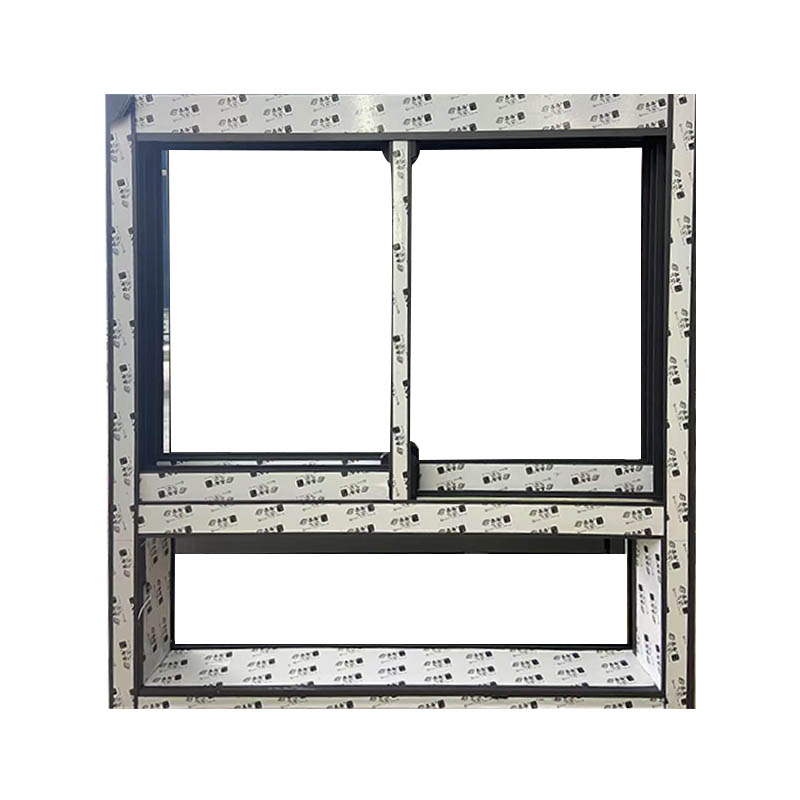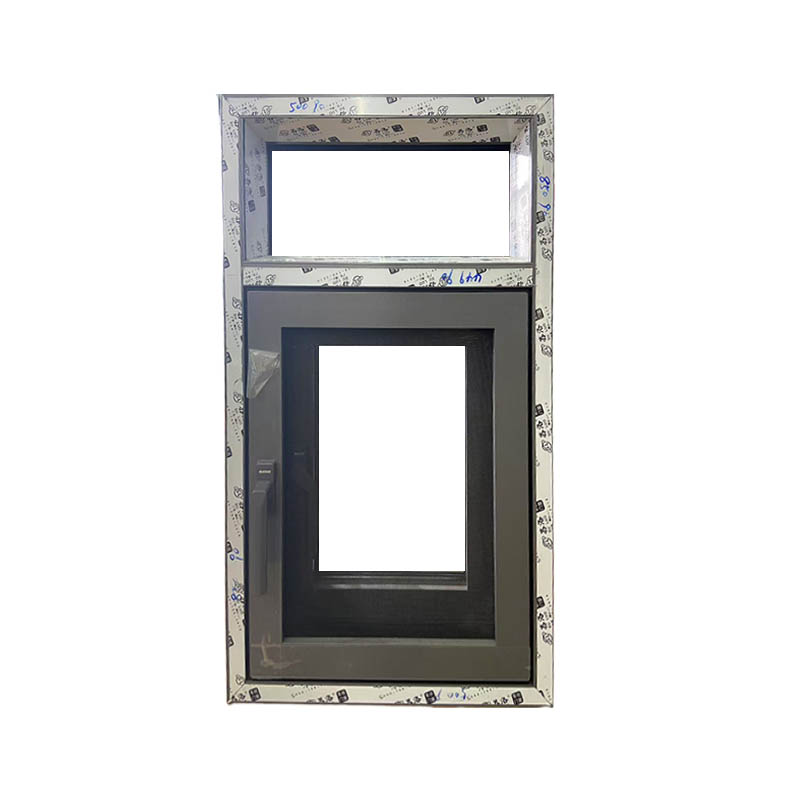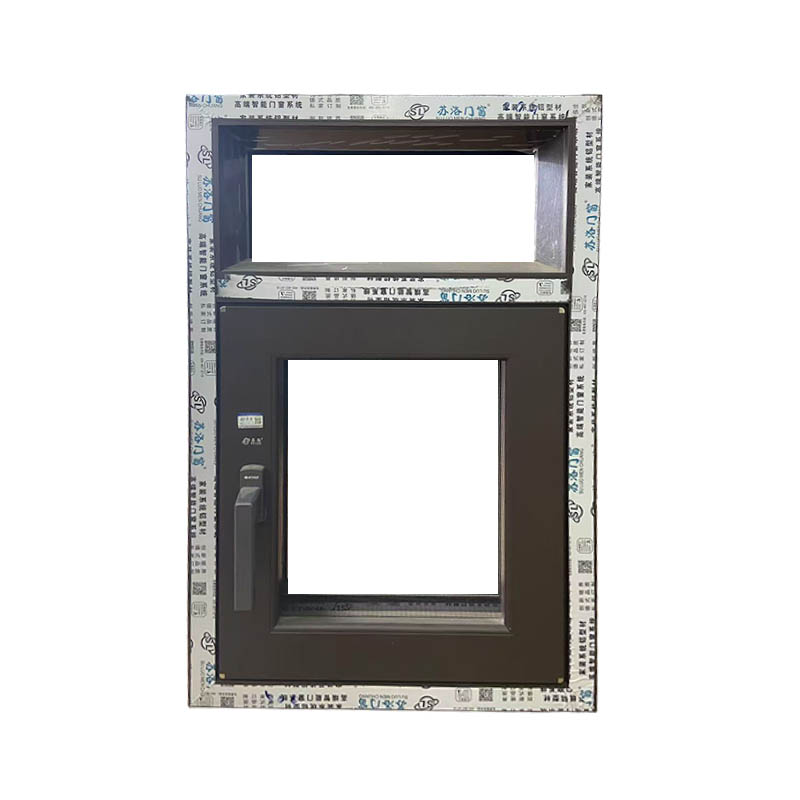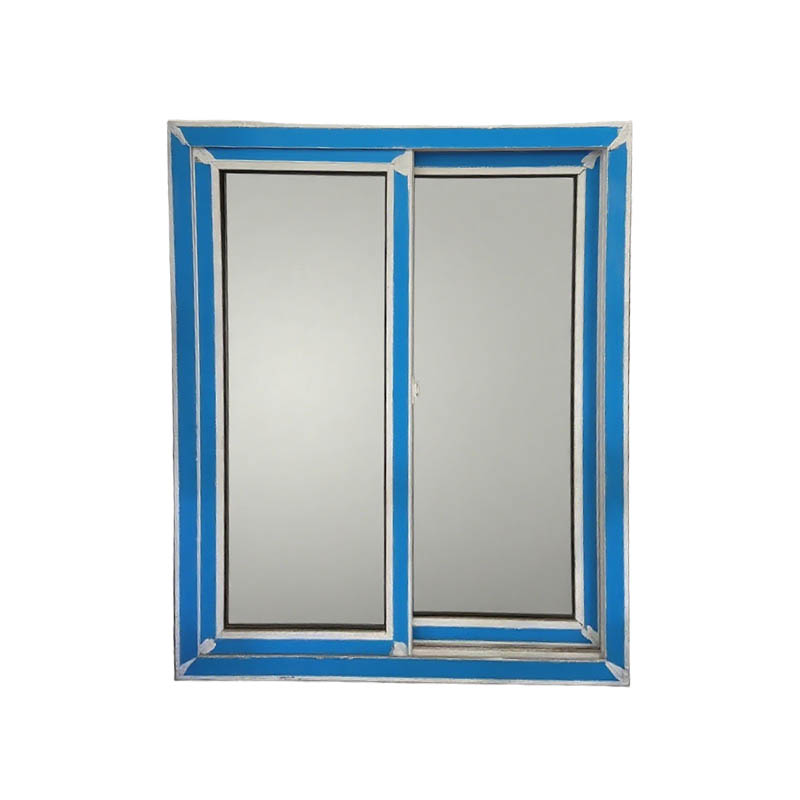Plastic steel sliding windows eliminate the dilemma of ventilation and insulation
Release Time : 2025-09-16
In modern homes, windows serve not only as a visual connection between indoors and outdoors but also as a crucial barrier for regulating air, light, temperature, and safety. However, many families have long faced a dilemma: opening windows for ventilation allows for the free flow of hot and cold air, significantly reducing the effectiveness of air conditioning or heating and increasing energy consumption; closing windows for insulation prevents indoor air circulation, leading to stuffiness, humidity, and even mold growth. This dilemma of "necessarily achieving both ventilation and insulation" is particularly acute in winter and summer. Plastic steel sliding windows were developed to address this dilemma. With their excellent sealing, thermal insulation, and ease of operation, they truly achieve the ideal living experience of "both fresh air and a constant, comfortable temperature."
1. Structural Advantages: The "Thermal Insulation Bridge" Principle of Plastic Steel Profiles
The core of plastic steel sliding windows lies in their material. "Plastic steel" isn't simply a combination of plastic and steel; it refers to a composite profile with a high-strength steel lining and a polyvinyl chloride outer layer. This structure combines the rigidity of steel with the thermal insulation of plastic. PVC itself has an extremely low thermal conductivity, effectively blocking heat transfer between indoor and outdoor spaces. Furthermore, modern high-end plastic steel windows employ a "broken bridge" design, creating air cavities or insulation strips within the profile to further block heat transfer paths, creating a multi-layered insulation barrier. Even in the harshest winters or sweltering summers, indoor temperatures remain stable for extended periods, significantly reducing the load on air conditioning and heating systems and achieving energy savings.
2. Enhanced Sealing: A Multi-Layer Sealing System Locks in Temperature and Filters Air
Traditional sliding windows often suffer from air and rain leaks due to structural limitations of the track. Modern plastic steel sliding windows, however, utilize optimized track design and employ EPDM rubber sealing strips, brush seals, and a concealed drainage system to create a multi-layered sealing system. Elastic sealing strips ensure a tight, gap-free fit between the sash and frame. Windbreak strips are installed on the upper and lower rails to prevent airflow through track gaps. When the sash is closed, a "cavity seal" is formed, effectively preventing cold air infiltration and heat loss. Even in windy weather, the interior remains quiet and warm, truly achieving the feeling of "closing the windows is like closing a room."
3. Intelligent Ventilation: Adjustable Opening Design for Controlled Air Exchange
Plastic steel sliding windows don't sacrifice ventilation for insulation. On the contrary, their flexible and convenient sliding structure allows users to freely adjust the opening range as needed—fully open for rapid air exchange, partially open for gentle breeze circulation, and even combine fixed and open sashes to create a cross-flow airflow. Some high-end models also feature integrated mosquito screens, stoppers, and safety locks, ensuring safe ventilation while preventing children from accidentally opening the windows or strong winds. In spring and autumn, simply sliding the sash allows for natural airflow, reducing reliance on mechanical ventilation and enhancing living comfort.
4. Soundproofing and Dustproofing, Improving Overall Living Quality
In addition to providing insulation and ventilation, plastic steel sliding windows also offer excellent sound insulation. The combination of PVC profiles and insulating glass effectively blocks external distractions such as traffic noise and neighboring noise, making them particularly suitable for street-facing residences. The sealed structure also blocks dust, pollen, and rain from entering the home, reducing cleaning frequency and making it particularly suitable for windy, dusty, or humid areas. Double or triple-glazed windows can also be equipped with Low-E film to further enhance thermal insulation, UV protection, and prevent furniture from fading.
5. Durable and environmentally friendly, with outstanding long-term value
Plastic steel windows are corrosion-resistant, age-resistant, and require no paint or maintenance, with a service life of over 20 years. Their recyclable materials align with green building principles. Compared to aluminum alloy windows, plastic steel windows offer a more competitive price point for comparable performance, making them a cost-effective choice for home renovations.
Plastic steel sliding windows, through their scientific material combination, sophisticated structural design, and user-friendly functional configurations, successfully break the conflict between ventilation and insulation. More than just a window, they are an intelligent environmental control system, allowing families to enjoy fresh air while maintaining a warm and comfortable indoor environment. In today's world of energy conservation, health, and quality living, plastic steel sliding windows, with their superior comprehensive performance, are becoming an indispensable and ideal choice for modern homes.
1. Structural Advantages: The "Thermal Insulation Bridge" Principle of Plastic Steel Profiles
The core of plastic steel sliding windows lies in their material. "Plastic steel" isn't simply a combination of plastic and steel; it refers to a composite profile with a high-strength steel lining and a polyvinyl chloride outer layer. This structure combines the rigidity of steel with the thermal insulation of plastic. PVC itself has an extremely low thermal conductivity, effectively blocking heat transfer between indoor and outdoor spaces. Furthermore, modern high-end plastic steel windows employ a "broken bridge" design, creating air cavities or insulation strips within the profile to further block heat transfer paths, creating a multi-layered insulation barrier. Even in the harshest winters or sweltering summers, indoor temperatures remain stable for extended periods, significantly reducing the load on air conditioning and heating systems and achieving energy savings.
2. Enhanced Sealing: A Multi-Layer Sealing System Locks in Temperature and Filters Air
Traditional sliding windows often suffer from air and rain leaks due to structural limitations of the track. Modern plastic steel sliding windows, however, utilize optimized track design and employ EPDM rubber sealing strips, brush seals, and a concealed drainage system to create a multi-layered sealing system. Elastic sealing strips ensure a tight, gap-free fit between the sash and frame. Windbreak strips are installed on the upper and lower rails to prevent airflow through track gaps. When the sash is closed, a "cavity seal" is formed, effectively preventing cold air infiltration and heat loss. Even in windy weather, the interior remains quiet and warm, truly achieving the feeling of "closing the windows is like closing a room."
3. Intelligent Ventilation: Adjustable Opening Design for Controlled Air Exchange
Plastic steel sliding windows don't sacrifice ventilation for insulation. On the contrary, their flexible and convenient sliding structure allows users to freely adjust the opening range as needed—fully open for rapid air exchange, partially open for gentle breeze circulation, and even combine fixed and open sashes to create a cross-flow airflow. Some high-end models also feature integrated mosquito screens, stoppers, and safety locks, ensuring safe ventilation while preventing children from accidentally opening the windows or strong winds. In spring and autumn, simply sliding the sash allows for natural airflow, reducing reliance on mechanical ventilation and enhancing living comfort.
4. Soundproofing and Dustproofing, Improving Overall Living Quality
In addition to providing insulation and ventilation, plastic steel sliding windows also offer excellent sound insulation. The combination of PVC profiles and insulating glass effectively blocks external distractions such as traffic noise and neighboring noise, making them particularly suitable for street-facing residences. The sealed structure also blocks dust, pollen, and rain from entering the home, reducing cleaning frequency and making it particularly suitable for windy, dusty, or humid areas. Double or triple-glazed windows can also be equipped with Low-E film to further enhance thermal insulation, UV protection, and prevent furniture from fading.
5. Durable and environmentally friendly, with outstanding long-term value
Plastic steel windows are corrosion-resistant, age-resistant, and require no paint or maintenance, with a service life of over 20 years. Their recyclable materials align with green building principles. Compared to aluminum alloy windows, plastic steel windows offer a more competitive price point for comparable performance, making them a cost-effective choice for home renovations.
Plastic steel sliding windows, through their scientific material combination, sophisticated structural design, and user-friendly functional configurations, successfully break the conflict between ventilation and insulation. More than just a window, they are an intelligent environmental control system, allowing families to enjoy fresh air while maintaining a warm and comfortable indoor environment. In today's world of energy conservation, health, and quality living, plastic steel sliding windows, with their superior comprehensive performance, are becoming an indispensable and ideal choice for modern homes.







